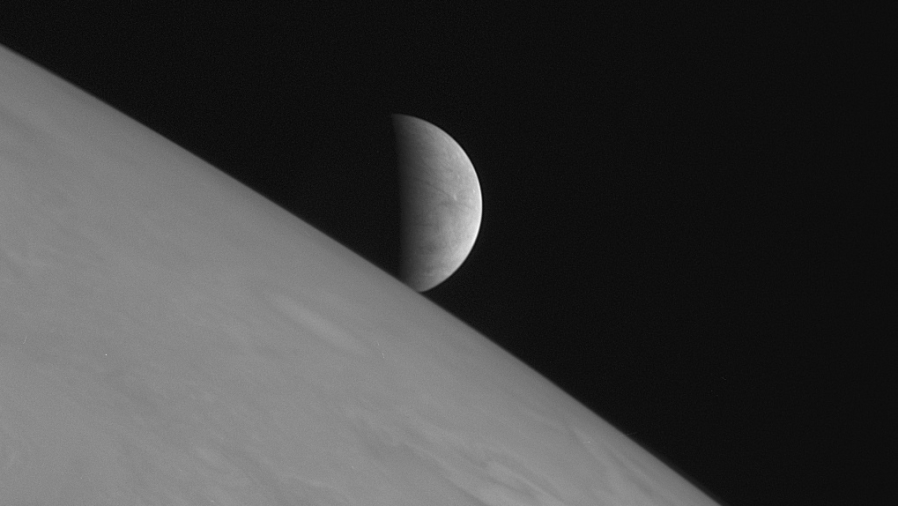Can life exist on Europa, Jupiter’s moon?

This October, NASA will launch the Europa Clipper spacecraft, beginning a deep space mission to one of Jupiter’s moons, Europa, to determine if it’s capable of supporting life.
Marketplace’s Lily Jamali recently visited NASA’s Jet Propulsion Laboratory in Pasadena, California, where the Clipper was built, to learn more about the mission and see the spacecraft before it’s shipped off to Cape Canaveral, Florida, later this month.
Marketplace’s Lily Jamali stands in front of NASA’s Europa Clipper spacecraft at the Jet Propulsion Laboratory. Later this year, NASA will send it to Jupiter’s moon, Europa, to determine if life can exist there. You can get a closer look at the Europa Clipper spacecraft here.
In order to make its scheduled 1.8 billion-mile voyage to Europa, the spacecraft comes equipped with massive solar power arrays, heavy radiation shielding and a thin metal plate that will carry, among other things, visual representations of the word “water” in 140 languages.
Why water? Because NASA is confident there’s a salt water ocean underneath Europa’s icy surface that could support life, thanks to scans conducted by the Galileo spacecraft in the 1990s.
“The best evidence for this liquid water ocean being there came from this magnetic signal that’s created when this conductive layer of saltwater that’s under Europa’s surface moves through the magnetic field created by Jupiter,” said Cynthia Phillips, project staff scientist and planetary geologist at JPL.
Marketplace’s Lily Jamali spoke with Phillips and mission scientist Kate Craft with the Johns Hopkins Applied Physics Laboratory about why NASA is looking for these conditions for life on Europa.
Click the player above to hear the at interview, and watch footage from our recent trip to JPL below.
Preston Dyches, senior public engagement specialist at JPL, talks about the “message in a bottle” attached to the Europa Clipper.
Cynthia Phillips, a planetary geologist at JPL, shows off a model of Europa’s surface and the salt water ocean lying underneath.
Lily Jamali had to go through a rigorous decontamination procedure before getting a close-up look at the Europa Clipper.
Tracy Drain, launch-to-Mars mission manager for Europa Clipper, explains why everyone who goes near the spacecraft must go through a rigorous decontamination process.
The future of this podcast starts with you.
Every day, the “Marketplace Tech” team demystifies the digital economy with stories that explore more than just Big Tech. We’re committed to covering topics that matter to you and the world around us, diving deep into how technology intersects with climate change, inequity, and disinformation.
As part of a nonprofit newsroom, we’re counting on listeners like you to keep this public service paywall-free and available to all.
Support “Marketplace Tech” in any amount today and become a partner in our mission.












